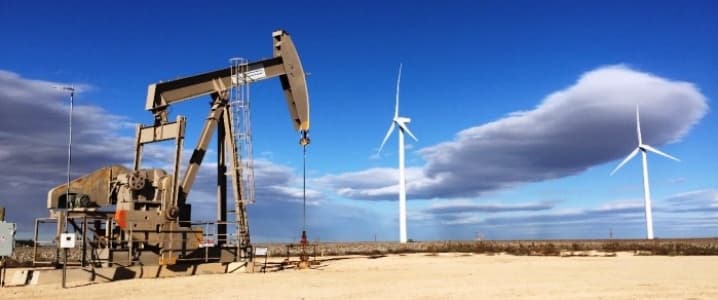The resurgence in shale drilling and production could be bumping up against some limits, with output expected to fall far short of market expectations for this year and next, according to a new study.
Some of the constraints that shale companies will run into are on the access to oilfield services (OFS), including rigs, equipment and personnel, according to Kayrros, a French research firm backed by the former CEO of OFS giant Schlumberger, and reported on by the FT.
Over the past three years, the oil market downturn led to sharp cutbacks in drilling and spending, with OFS companies bearing the brunt of the contraction. Oil producers demanded sharply lower prices for rigs, equipment and completion services, which translated into plunging revenues for OFS companies.
But the rebound is tightening that market, with backlogs for completion services reported in places like the Permian basin. Oil producers had hoped a lot of the cost reductions and efficiencies that they achieved since 2014 would be permanent, but some of it will only be cyclical.
OFS companies have new leverage after drilling activity skyrocketed in the first half of 2017. Now, according to Kayrros, OFS companies can hike their prices, demanding higher rates for well completions, for example. But shale companies will struggle if they have to pay higher costs for services, especially if oil prices remain stuck at $50 per barrel or below.
Related: Daily OPEC Oil Prices Now Public For The First Time Ever
The backlog of drilled but uncompleted wells (DUCs) has spiked this year, rising by nearly 1,000 to over 6,000 by June, a 20 percent increase since January. Part of the reason for the uptick was because shale companies are seeking to ride out the most recent downturn in prices, hoping for higher prices at a future date. But the DUC list was rising even when prices were above $50 per barrel earlier this year, pointing to other problems.
There is a growing recognition that the well backlog is largely the result of a shortage of fracking crews and completion services, particularly in the white-hot Permian basin. Producers are having to put drilled wells on the sidelines as they await the availability of a fracking crew. Prices for fracking services have doubled since last year, the FT says, according to analysts at Jefferies.
Kayrros argues that the swelling DUC list is a leading indicator of a coming slowdown in oil production. Having surged by roughly 700,000 bpd since the end of last year to more than 9.4 million barrels per day (mb/d), the shale industry is firing on all cylinders. The EIA predicts that output will top 10 mb/d by 2018.
But the industry could dramatically underperform because of these supply chain constraints. “The fracking industry is taking time to ramp up; there are not enough crews available to complete all the wells that have been drilled,” said Antoine Rostand, president of Kayrros, according to the FT.
Schlumberger’s current CEO Paal Kibsgaard told investors on an earnings call last week that Wall Street is dragging down the entire oil industry by funneling too much money into shale drilling. The WSJ estimates that roughly $57 billion has flowed into the shale sector over the past 18 months, keeping even cash-strapped drillers afloat. The surge in capital has been translated into higher and higher levels of production, forcing oil prices down.
“What we are currently witnessing is that the U.S. equity investors and U.S. companies have spooked the market," Kibsgaard told shareholders. Another downturn in prices threatens some shale drillers. Related: Anadarko Blinks First In The Shale Standoff
For now, Schlumberger has benefitted from that surge in drilling. The company told investors that its revenues from the shale industry were up 68 percent in the second quarter from the first, a huge jump. Company officials also said that they are fully booked through almost the rest of the year.
But with companies the Schlumberger stretched to the limit with work, other OFS companies are likely similarly booked up, which means that some shale producers will struggle to bring new wells online. That ultimately undercuts the chances of huge production increases in the second half of 2017.
ADVERTISEMENT
Of course, if the shortage of completion services prevents some output from coming online, and the U.S. falls short of production forecasts, that will only serve to drive up the price of crude later this year and into 2018, thus incentivizing more drilling.
By Nick Cunningham of Oilprice.com
More Top Reads From Oilprice.com:
- Will The UAE Further Boost Its OPEC Compliance?
- Electric Car Industry Faces A Looming Supply Shortage
- New Regulations May Come As A Rude Awakening For Oil Companies



















And now, newer ones are held hostage by the frack crew workforce who get to cherry pick their jobs and set their prices.